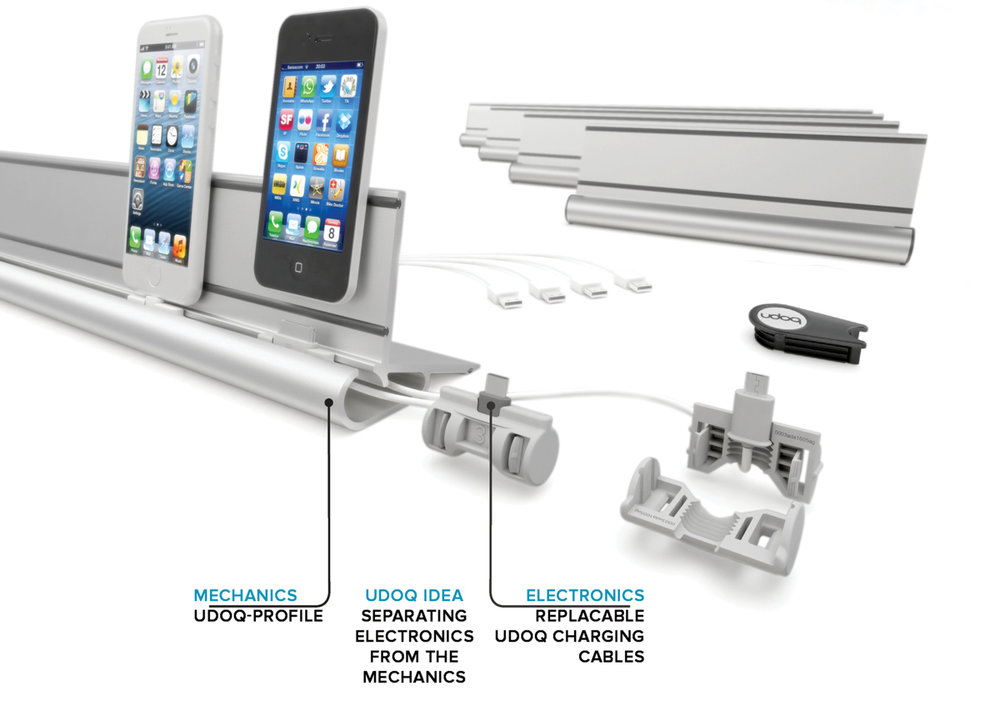The udoq is an organizer that works with iOS and Android devices. According to the manufacturer, it’s designed to “eliminate the search for cables and chargers.” Mission accomplished. Alas, it doesn’t reduce cable clutter, although one big change could make that happen.
The udoq is a unique docking station in that it adapts to most old or new mobile devices of any brand or generation and allows full use of each gadget while they’re being juiced up. The clever design allows gadget connectors to be moved inside the charging rail, so you can quickly change the distance and placement of devices you’re powering up.

The udoq is made of sturdy aluminum and is available in several models for iOS and Android (I tested the 400 model for Apple devices):
- udoq 250 (9.8 inches long). $110.80 (iOS), $98.80 (Android);
- udoq 400 (15.7 inches long). $146.70 (iOS), $128.70 (Android);
- udoq 550 (21.6” inches long). $182.60 (iOS), $158.60 (Android);
- udoq 700 (27.5 inches long). $218.50 (iOS), $188.50 (Android).
The longer the docking station, the more devices you can attach. There’s an online configurator to help you figure out which udoq is right for you.
To use you connect the docking station to your computer, your original chargers or an additional multi-port USB charger. The connector cables are inserted from the side, and positioned in the order you desire.
The slidable, exchangeable udoq connector cables offer convenient, flexible use if you’re constantly changing, adding or removing mobile devices, as they can be adjusted in four steps. Another nice feature: the udoq works with cases up to 8mm thick.
The downside of the udoq is that, as mentioned, it doesn’t reduce cable clutter. For example, I have four iOS devices (one 12.9-inch iPad, two iPhones and AirPods) connected to the 400 model, and there are four USB cords running from the udoq to my iMac.
While this makes its easy to charge all my iOS gadgets at once (and use ‘em while they’re charging), there are a lot of cables creeping around my desk.
I’d love to see a power supply built directly into the udoq, so it could be used without a Mac connection, a USB hub or multiple, original chargers. And since my Magic Mouse and Magic Keyboard can be charged via a Lightning cable, I’d love to see an easy way to use the udoq to juice them up along with my mobile devices.
In its current form, the dock connector is useful. But I hope the next gen is even better.
Apple World Today Rating (out of 5 stars): ★★★★
